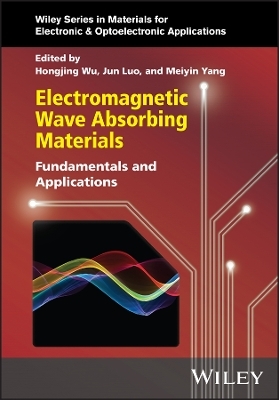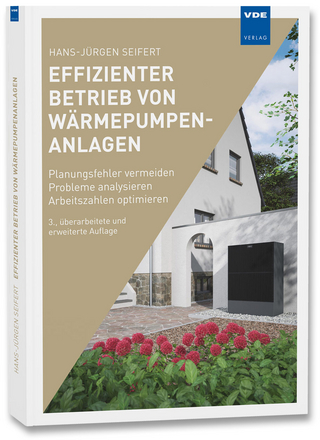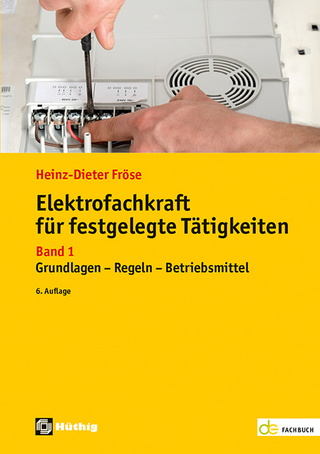
Electromagnetic Wave Absorbing Materials
John Wiley & Sons Inc (Verlag)
978-1-119-69934-7 (ISBN)
Electromagnetic Wave Absorbing Materials presents information on the most promising electromagnetic wave absorbing materials, with timely coverage of both conventional and novel materials including 1D, 2D, and 3D materials. This book enables readers to address the growing specification needs in the field through optimizing electromagnetic parameters and promoting interface polarization, two key properties for wireless technology in electronic applications.
Edited by three highly qualified academics with significant relevant research experience, Electromagnetic Wave Absorbing Materials includes discussions on:
Materials including ferrites, graphene, carbon‐based composite absorbers, SiC ceramics, MOFs, and meta‐material based absorbers
Recent advances in the field surrounding composite absorbers, conductive polymers, and ceramics, and other materials
Potential improvements in the Internet of Things, 5G mobile applications, and intelligent transport systems through electromagnetic wave absorbing materials Potential improvements in the Internet of Things, 5G mobile applications, and intelligent transport systems through electromagnetic wave absorbing materials
Applications including terrestrial and satellite communication (software radio, GPS, and satellite TV), environmental monitoring via satellite, and EMI shielding, as well as stealth applications
Electromagnetic Wave Absorbing Materials is an essential reference on the subject for researchers and advanced students in the chemical, electronics, and communications industries, as well as R&D scientists at companies such as Apple, HUAWEI, and China Aerospace Science and Technology Corp (CASC).
Edited by Hongjing Wu Northwestern Polytechnical University, China Jun Luo Institute of Microelectronics, Chinese Academy of Sciences (IMECAS), China Meiyin Yang Institute of Microelectronics, Chinese Academy of Sciences (IMECAS), China Series Editors Arthur Willoughby University of Southampton, Southampton, UK Peter Capper formerly of Leonardo M. W. Ltd, Southampton, UK Safa Kasap University of Saskatchewan, Saskatoon, Canada
List of Contributors xi
Overview of the Work xiii
Acknowledgments xv
1 Metal-Organic Framework-Based Electromagnetic Wave Absorption Materials 1
Zijing Li
1.1 Brief Introduction to Metal-Organic Frameworks 1
1.2 Preparation Method of MOF Materials 2
1.3 MOF-Derived EMW Absorption Materials 11
1.4 Summarize and Prospect 22
2 2D MXenes for Electromagnetic Wave Absorption 31
Weibin Deng
2.1 Introduction to MXenes 32
2.2 Preparation Method of MXenes 32
2.3 The Properties of MXenes 37
2.4 Electromagnetic Wave Absorption Performance of Pure MXenes 39
2.5 Classification of MXenes in EMW Absorbing Materials 44
2.6 The Application Prospects of MXenes in EMW-Absorbing Materials 58
3 High-Entropy Electromagnetic Wave Absorption Materials 67
Shengchong Hui
3.1 The Concept and Features of High-Entropy Materials 67
3.2 The Synthesis Approach and Advanced Characterization of HEM 71
3.3 High-Entropy Electromagnetic Wave Absorption Materials 77
3.4 The Challenge and Prospects of HEM 85
4 Novel Microscopic Electromagnetic Loss Mechanisms 91
Hongsheng Liang
4.1 Novel Dielectric Loss Mechanisms 91
4.2 Novel Microscopic Magnetic Loss Mechanisms 103
4.3 Conclusion and Outlook 112
5 Bridging Mechanisms Between Micro and Macro 117
Geng Chen, Tao Zhang, and Yuntong Wang
5.1 Introduction to Micro Factors 118
5.2 Regulation of Microscopic Attributes 130
5.3 The Current State and Future Potential of Bridge Mechanism Between Micro and Macro Levels 137
6 New Dielectric Physical Models for Electromagnetic Wave Absorption 145
Hongsheng Liang
6.1 Dielectric Microphysical Model 145
6.2 Physical Models Related to Structural Design 156
6.3 Intelligent Off/On Switchable Model 162
6.4 Conclusion and Outlook 165
7 Integrated Foam-Type Electromagnetic Wave Absorption Materials 169
Qing Chang
7.1 Carbon-Based Foam for EMW Absorption 169
7.2 Ferrite-Based Foam for EMW Absorption 185
7.3 SiC-Based Foam for EMW Absorption 188
7.4 Conductive Polymer Composites Foam for EMW Absorption 191
8 Integral Gel Electromagnetic Wave Absorption Materials 199
Jiaming Wen
8.1 Dielectric Liquid Medium Gel Electromagnetic Wave Absorption Materials 200
8.2 Dielectric Solid Medium Gel EMW Absorption Materials 206
8.3 Prospect of Integral Gel EMW Absorption Materials 215
9 Thin-Film Electromagnetic Wave Absorption Materials 221
Bin Shi
9.1 Introduction 221
9.2 Film Electromagnetic Wave Absorption Materials 221
9.3 The Conclusion and Prospect 238
References 239
Index 241
| Erscheinungsdatum | 28.09.2024 |
|---|---|
| Reihe/Serie | Wiley Series in Materials for Electronic & Optoelectronic Applications |
| Verlagsort | New York |
| Sprache | englisch |
| Maße | 170 x 244 mm |
| Gewicht | 680 g |
| Themenwelt | Technik ► Elektrotechnik / Energietechnik |
| Technik ► Maschinenbau | |
| ISBN-10 | 1-119-69934-7 / 1119699347 |
| ISBN-13 | 978-1-119-69934-7 / 9781119699347 |
| Zustand | Neuware |
| Informationen gemäß Produktsicherheitsverordnung (GPSR) | |
| Haben Sie eine Frage zum Produkt? |
aus dem Bereich


